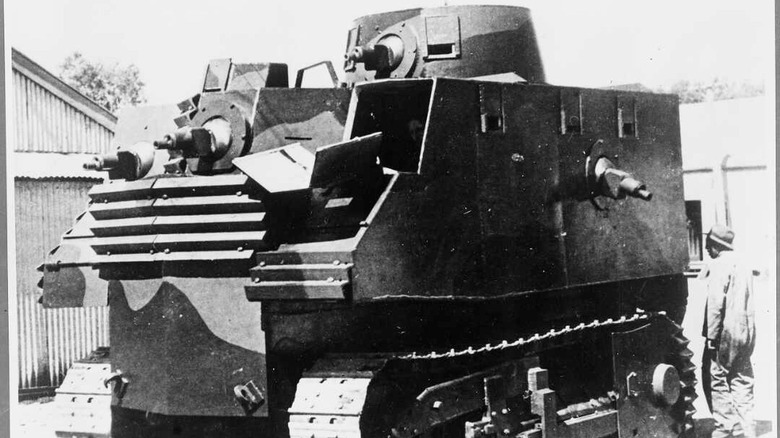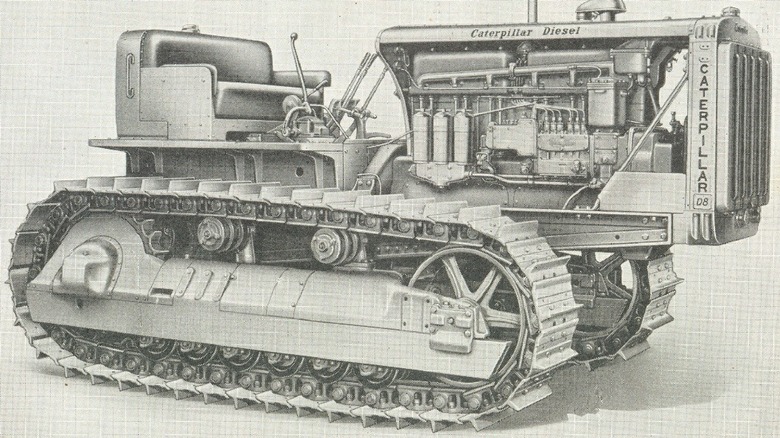One Of WWII's Weirdest Tanks: The Bob Semple Tank
The Germans attacked and captured France, Luxembourg, the Netherlands, and Belgium (The Battle of France). The British Army was forced to retreat through Dunkirk via Operation Dynamo, saving some 338,000 British and Allied troops, but in the process, lost most of their equipment (including tanks).
Meanwhile, nearly 12,000 miles away in the South Pacific Ocean, New Zealand was terrified that Japan's Imperial military would attack because it had taken out China and was advancing unchecked through the then Dutch East Indies. Although the miraculous retreat at Dunkirk saved many lives, the British lacked armored fighting vehicles to aid their defense. And this is where New Zealand's minister for public works enters the story.
Bob Semple was an eccentric fellow who would've been routinely showcased on TMZ had the tabloid news organization existed then. He worked as a gold miner, was a bare-knuckle boxer, and became a union leader. He publicly condemned his country's involvement in World War I and railed against compulsory enlistment (enacted in 1916) into military service. In fact, he was prosecuted for not divulging his son's age to keep him from getting drafted. Shortly after that incident, he was arrested for telling miners to ignore the conscription order altogether.
When the Labour Party took power in 1935, Semple became the minister for public works. As World War II accelerated and an impending invasion seemed imminent, his duties defaulted to minister for war, and his previous hardline stance against war changed. This time, he actually helped enact conscription to save his country.
[Featured image by Unknown via Wikimedia Commons | Cropped and scaled | CC BY Public Domain]
Semple's simple sampled tank
The entirety of New Zealand's armored force at the time consisted of six Bren Gun Carriers. These small, lightly armored multi-purpose carriers lacked any heavy artillery and were designed to transport personnel, equipment, or large-caliber machine guns. They were never meant to stave off a fully armed invading army.
With the Brits unable to send help, the government gave Semple the go-ahead to move forward with an audacious idea — to convert industrial tractors (which they had in abundance) into makeshift tanks. Semple said, "If this country is going to be invaded, we need to have equipment as good as that of the other fellow, if not better... we could not buy tanks from outside, but had to act on our own resources."
And act, they did. The Defence Department was trying to get armor plating and blueprints to build tanks from the United States, but turnaround time was not on their side. Some sources say Semple saw a photograph that showed how to convert a Caterpillar tractor into a tank. Whatever the case, it was far from a blueprint detailing any actual specifications.
That didn't stop Semple. He assembled a team to DIY existing Caterpillar D8 tractors into armored fighting vehicles (AFVs) and, using only the photo as a reference, banged out the first homebuilt tank in a month.
While the D8's chassis remained intact, it was fitted with a plywood and metal structure layered with fully welded 8-millimeter (0.31-inch) thick armor plating. On top of that was an additional layer of 12.7-millimeter (0.5-inch) Manganese-rich corrugated steel plates. All of which were quick, easy, and inexpensive to manufacture.
The little tractor tank that could... but probably not
Testing proved it could withstand up to 20-millimeter (0.79-inch) caliber anti-tank rifle bullets but not a 37-millimeter shell fired from a typical Japanese tank. The army wanted the "tank" to have its own 37-millimeter cannon in a revolving turret, but when they couldn't find any, another machine gun was added instead. Six Bren .303 caliber machine guns bristled out of both sides and the rear, with two more in front and one in the turret. However, firing arcs and accuracy proved to be problematic.
It was oddly shaped at 13 feet long, 10 feet wide, and 12 feet tall, causing it to be top-heavy and dangerously unstable. The 127 horsepower six-cylinder diesel Caterpillar engine would have gone 7.5 mph when coupled to a standard gearbox. Unfortunately, the regular Cat D8 gearbox had to be switched out for a 2:1 ratio box, and the speed plummeted to 1.5 mph, which wasn't even a brisk marching pace.
A second was built a month later (March 1941) minus the turret, shaving off more than two feet from the overall height. Both were then sent out on the parade circuit to bolster pride and enthusiasm and prove the government was doing everything it could for the war effort. The move backfired, though, and ridicule rained down on Semple for creating what has since become known as one of the worst tanks ever designed.
[Image by U.S. Army War Department via Wikimedia Commons | Cropped and scaled | CC BY Public Domain]

